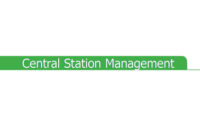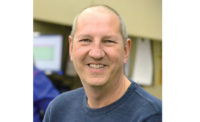As director of operations at Rapid Response Monitoring, Syracuse, N.Y., Jonathan Rainbow is responsible for ensuring that employees are happily working hard and making sure daily operations run without a hitch. Part of this was implementing COVID-19 work plans. He ensured that the company adhered to all safety guidelines throughout the pandemic with consistent messaging — which was incredibly important when guidelines changed almost weekly. He also built different processes and a tracking system for testing and contract tracing; quantifying time lost due to COVID-19 leaves; and a process for daily employee temperature screenings.
Rainbow, who was named TMA Monitoring Center Manager of the Year in April 2021, sat down with SDM to discuss his beginnings in the industry, staying in-office at the beginning of the pandemic, and the importance of communication in COVID-19.
SDM: You’ve been with Rapid Response Monitoring for 11 years. When did you first enter the security industry? What has your career path looked like thus far?
RAINBOW: My trek through the alarm industry has been mainly at Rapid Response. I started here as a control center specialist. I was in our entry-level position processing alarms and taking phone calls back in 2010, right out of college. I graduated from a local college here in the Syracuse area with my marketing degree, but I wasn’t really sure what I wanted to do. I worked for my dad at the time. He actually found the job posting for me, and encouraged me to apply. When I applied to Rapid, I was impressed by the fact that they focused on internal advancement opportunities; that’s something that was important to me at the time. I spent about a year in that role before I transferred into our leadership development program. It sent me through all of our major departments, so I spent time with operations, dealer support, our customer service team, our technical services, sales and marketing, and I got to shadow almost all of the employees and at least all the positions. I got an opportunity to act in their position as well. I didn’t know a lot about the alarm monitoring industry prior to joining Rapid, so that taught me a lot about Rapid and what role they play specifically within the industry. From there, I spent time back in the operations department as a shift manager on our second shift. I became the director of the department back in 2017.
SDM: How did your central station respond to the coronavirus pandemic and what steps did you take as manager to get your team through the pandemic — both when it first happened and as it continues to develop?
RAINBOW: Communication was by far the most important thing that we learned from day one: if we continued to communicate what our initiatives were, what our goals were, that really helped the employees know what direction we were moving, because there wass a lot of uncertainty. We actually started doing daily correspondence. Every single day, we would meet as a management team and talk about new challenges that were presenting themselves and what our reactions were going to be. And then we would send out a communication. We would explain what we were going to do, and then what our big picture planning was going to be — even down to how our day-to-day interactions were going to change. I met with as many people as I possibly could. And I continue to do that to understand, what are your questions? What are your concerns? What is going to stop you from coming to work? What are you worried about? What are you not worried about? What are your peers worried about? Because it’s our employees that we value and we wanted to understand what was important to them. That would drive our actions and our communication.
SDM: How is your central station operating now, almost two years into the pandemic? What adjustments are you making as this new normal develops?
RAINBOW: You took the words right out of my mouth: the new normal. We’ve kept a lot of things in place: we still do temperature checks throughout the day; there’s still social distancing when it comes to seating; we still do facial coverings in both of our offices. We’ve learned where the limitations are. We’ve learned the value of being socially distanced and following the guidance, whether it’s at the federal, state or CDC level. We just change and adjust with it. We don’t think that we’re experts when it comes to knowing the best way to handle this, but we follow the numbers, we follow the guidance. From there, we’ve been able to come up with a system that allows us to still do all of the things that we would normally do. We take advantage of the virtual options that allow us still to communicate as a team. That’s the world I anticipate us living in for as long as needed. It’s changed a little bit from encouraging people to stay home if they don’t feel well and encouraging people to get tested if they don’t feel well. [It’s turned] into talking about the knowledge and education behind vaccines and boosters. We just try to be in a place where we provide as much education as we can. We want to be as supportive as humanly possible. I think that’s allowed us to maintain an in-office model, and I think that’s allowed us to maintain the customer service that we provide today. Keeping that same mindset as we move forward will be extremely important.


